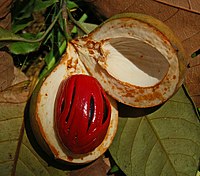
Photo from wikipedia
Seed companies increasingly seek excellence in production quality through rigorous processes, such as the tetrazolium test (TZ test) and the vigor definition. However, these are extremely laborious processes since it… Click to show full abstract
Seed companies increasingly seek excellence in production quality through rigorous processes, such as the tetrazolium test (TZ test) and the vigor definition. However, these are extremely laborious processes since it necessitates the experience of a specialist and the visual analysis of a considerable quantity of seeds as sampling for determining the vigor of the seed lot.Moreover, although the TZ test has a defined protocol, this analysis may vary from analyst to analyst because it is a subjective human process. In this context, several efforts have been carried out in an attempt to automate the analysis process, in order to reduce their intrinsic problems. Thus, this article presents approaches for the learning and classification of the soybean seed vigor. In addition, alternative active learning strategies are proposed to improve the selection of the most informative samples for the learning process. An extensive experimental evaluation is performed considering different datasets and state-of-the-art learning techniques. Based on the obtained results, it is possible to observe that active learning approaches lead to more robust classifiers, which reach higher accuracies faster (in less learning iterations) than traditional supervised learning approaches. We also obtained a reduction of $\text{95.22}{\%}$ of labeled samples used in the learning process.
Journal Title: IEEE Transactions on Industrial Electronics
Year Published: 2021
Link to full text (if available)
Share on Social Media: Sign Up to like & get
recommendations!